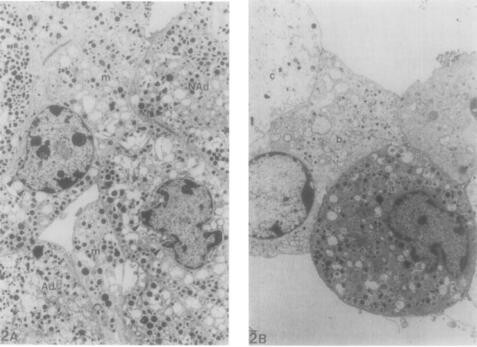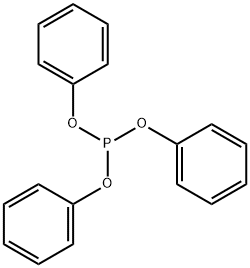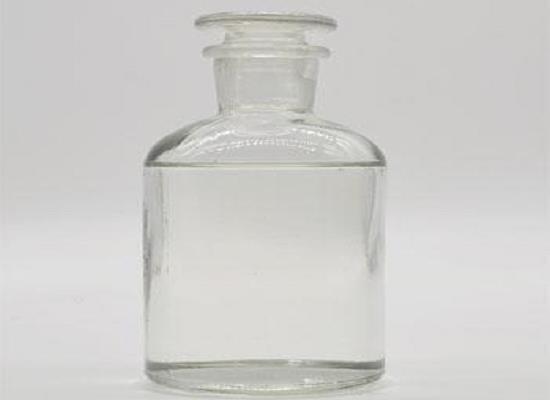ChemicalBook > Articles Catagory List >Inorganic-acid-Esters >Triphenyl-phosphite-Biological-Toxicity
Triphenyl phosphite- Biological Toxicity
Feb 17,2020
Triphenyl phosphite (TPP) is the chemical compound with the formula P(OC6H5)3. This colourless viscous liquid is the ester of phosphorous acid and phenol. It is used as a ligand in organometallic chemistry. Nickel complexes of this ligand are homogeneous catalysts for the hydrocyanation of alkenes.[1]
The primary toxic effects of triphenyl phosphite are exerted on the nervous system of susceptible animals. The univeral signs of triphenyl phosphite neurotoxicity result from the irreversible inhibition of acetylcholinesterase (AChE) at cholinergic synapses in the central, peripheral and autonomic nervous system. Triphenyl phosphite is also capable of producing characteristic delayed neurotoxic effects that are manifested several days or weeks after even minimal drug exposure. Such actions are not related to AChE inhibition and the precise biochemical mechanism(s) leading to the delayed neurotoxicity symptoms are largely unresolved. [2]
TPP’s effect on a mechanistic level have been investigated with regard to its inhibition of the enzyme neurotoxic esterase (NTE). NTE was originally proposed as the putative target for the neurotoxic compounds which produce OPIDN. Although TPP has been shown to significantly inhibit NTE in the hen, it only minimally inhibits NTE in the rat.[3]
Konno et al. investigated the distribution and pharmokinetics of TPP in various tissues and assessed its effect on various mitochondrial enzymes in hen skeletal muscle following iv treatment. They found that both creatine kinase and succinate dehydrogenase activities in mitochondria isolated from the adductor magnus and soleus muscle were inhibited significantly 24 to 48 hr postdosing. Creatine kinase has been implicated in energy transfer from mitochondria to the myofibrils in skeletal muscle. Inhibition of the enzymatic activity associated with these proteins undoubtedly adversely affects intracellular energy transport in skeletal muscle. On the basis of their finding, they suggested that a likely target for TPP toxicity is the mitochondria.[4]
It was also found that TPP inhibits the exocytotic secretion of catecholamines from chromaffin cells in both a time and a dose-dependent manner. Although maximum inhibition of secretion is seen with nicotine, inhibition is independent of the choice of secretagogue. Also, TPP inhibited calcium uptake into the cells when the cells were stimulated with the secretagogue, nicotine, or high potassium. An increase in intracellular calcium is critical to the secretory process. One possible mechanism by which TPP operates is via interference with calcium homeostasis.[5]
References
1.Schaap A, Bartlett PD, Direct reaction of triphenyl phosphite ozonide with cis- and trans-diethoxyethylenes[J]. J. Am. Chem. Soc. 1970, 92(20):6055-6057
2.Alberto S, Daniele V, Paolo D, Giovanni T, Fabio P. A Mild Synthesis of Vinyl Halides and gem-Dihalides Using Triphenyl Phosphite−Halogen-Based Reagents[J]. J. Org. Chem. 2007, 72(6):2216-2219
3.Fioroni F, Moretto A, Lotti M. Triphenylphosphite neuropathy in hens[J]. Archives of Toxicology, 1995, 69(10):705–711
4.Abou-Donia MB. Organophosphorus ester-induced delayed neurotoxicity[J]. Annu. Rev. Pharmacol. Toxicol. 1981, 21(5):51l-548.
Apple FS, Rogers MA. Mitochondrial creatine kinase activity alterations in skeletal muscle during long-distance running[J]. J. AppZ. Physio. 1986, 2:482-486.
);
You may like
Application of Polyphosphoric acid
Dec 31, 2021
Introduction of Phosphoric acid
Nov 22, 2021
Related articles And Qustion
See also
Lastest Price from Triphenyl phosphite manufacturers
Triphenyl phosphite
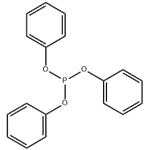
US $100.00-1.00/KG2024-03-25
- CAS:
- 101-02-0
- Min. Order:
- 1KG
- Purity:
- 99%
- Supply Ability:
- g-kg-tons, free sample is available
Triphenyl phosphite
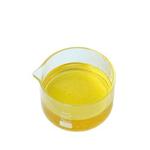
US $100.00/kg2024-02-27
- CAS:
- 101-02-0
- Min. Order:
- 1kg
- Purity:
- 99%
- Supply Ability:
- 100 tons
